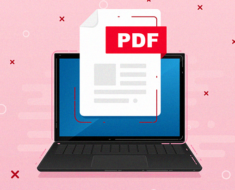Spam is a nuisance for users and website owners. These messages range from annoying to dangerous. Businesses and cybercriminals use spamming software in pursuit of different goals. While companies hope to gain new customers, fraudsters lace their emails with malevolent links. These are used for identity theft and stealing of financial data.
Luckily, humanity has devised quite a few ways to counteract spammers. Mail client filters may cope with the task, but efficiency varies. A surefire method of fighting cyber offenders is through spam IP where a list of spam IP addresses can be checked. Complaints can be submitted by any user. Once mounting reports cross the 0.01% threshold, the sender is blacklisted. Here are a few intricacies of such systems.

Pexels
How Lists Are Updated
There are two sources of data for blacklists. First, automated systems detect the use of spamming software and open relay servers. These are two reliable signs of unwanted mailing. Secondly, individuals may report the IP address or domain of senders bothering them. Here, the behavior is based on subjective motives. Users may be prompted to complain if:
- They cannot remember signing up.
- They cannot find the link for unsubscribing (it is no-existent or hard to see).
- They receive too many messages in general.
- They dislike the content of the emails.
However, there is one more possible cause, and this one is tricky. Email addresses that have been inactive for a while may be turned into “spam traps”. As the term suggests, they cause unsuspecting senders to be blacklisted for mailing. Overall, it is essential for companies to keep their address lists updated. The success of entire marketing campaigns may be at stake.
Automatic Detection
Internet service providers, or ISPs, are constantly working to improve their anti-spam defense. For them, blacklists are indispensable. Hence, every user reporting a bot or fraudster contributes to the global war against spam. But how do automated detection systems work?
No sender of large email volumes remains unnoticed. Mail Abuse Prevention Systems and other entities spot active mailing. They record the respective IPs and domains and spot fishy actions.
Whenever an email is sent, the IP address is logged. It is then used by the recipient’s mail server to verify the source. This is when communication with blacklists is established. If the IP has a prior history of spamming, the message lands in the junk. For repetitive violators, there is no hope of reaching the destination mailbox at all.

Pexels
Reporting and Checking
The procedure is simple. Open the blacklist page and enter the details (IP/domain). Remember to specify the type of attack, so the team knows how to classify the offender. Comments are optional.
That’s all! Lists are updated all the time. If you want to check that your own IP is legit, the scheme is just as basic. Submit the address and see if there is a match.









































